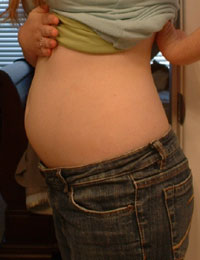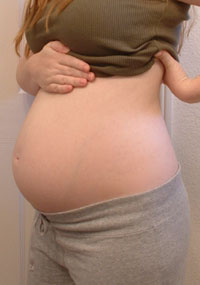The process of removing life support is done with an intended outcome of death for the patient. Life support is removed at the request of the patient or in cases where the patient is already legally dead but their body continues to be supported by machines.
While removing life support is a fairly common process that is done daily across the country, it is far less common to remove life support from a patient who is pregnant. When this is done, there are additional concerns and complications from the procedure.
Brain death occurs before the procedure in most cases. The patient in this case had been declared legally dead some nine weeks before life support was removed.
As a first step, tests are performed to determine if brain death has occurred. These tests are normally completed at least twice – once fairly quickly after admission and again shortly before life support is removed.
The tests look for any sign of brain function – including the ability to sense pain, response to light and other stimuli and the ability for the body to maintain breathing unassisted. When a person fails all of these tests, they are considered legally dead and may undergo the procedure to have their body die.

The patient was kept alive for nine additional weeks over concern for the pregnancy she was carrying. During that time, the baby continued to receive oxygen and nutrients from the woman’s body. In effect, the brain dead patient was acting as an incubator for the growing baby.
As time went on, the woman’s body continued to prepare for the pregnancy. The growth of the baby continued to cause expansion of the woman’s womb and her baby bump became larger. The hormones from the baby caused additional breast growth.
It is impossible to determine what, if any, damage was done to the babies brain during the original medical emergency that caused brain death of the mother. The baby itself could also be brain dead, or developmentally delayed. There have been recorded cases of the baby being perfectly normal if left inside the mother for the full term of pregnancy.
Once the hospital determined that life support would be removed, the actual process is short and simple.
The heartbeat of both the patient and the unborn baby is easily monitored. The patients heartbeat is monitored with a standard monitor. The babies heartbeat is monitored with a fetal stress monitor.
At 23 weeks, there is also fetal movement within the patient. The fetal stress monitor is able to monitor this movement as well.

Most hospitals administer anesthetic to the patient shortly before the procedure. While the patient is already brain dead and gains no benefit from the procedure, it is often done “just in case” and as a way to sooth the fears of relatives that the patient may feel something as the life support is removed.
When a pregnant patient is far enough along for the family to be able to see the baby moving inside her body, the anesthetic provides the additional benefit of stopping the family from seeing the baby moving as death occurs. Normally, anesthetic is administered twenty to thirty minutes before life support is removed to pregnant women to ensure that a sufficient amount has crossed the placental barrier to produce unconsciousness in the fetus.
Once anesthetized or if the medical team has determined there is no need for anesthetic, the ventilator to the patient is switched off.
The oxygen level of the patient falls rapidly and the carbon dioxide level inside the patients lungs builds. Normally, this would trigger the brain to take a breath. In a brain dead patient, this does not happen.
Within a few minutes, the oxygen level is low enough in the patient that the heart ceases to function. Once the heartbeat has failed, the final steps of dying occur. The baby within the patient will maintain a heartbeat for an additional minute or two. Once it has also failed, the fetus is also considered dead.
If the patient and thus the baby was anesthetized prior to the removal of the oxygen supply, there is no visible movement inside the body as death occurs.
If anesthetic was not used, random kicking will occur in the womb before the ventilator is switched off. This kicking will strengthen as the oxygen levels begin to fall and the baby enters distress. The falling oxygen levels cause unconsciousness in the baby fairly quickly. However, if the baby was not brain dead, movement will continue through random muscle spasm. Once the baby’s heartbeat fails, movement will also cease.
The patient is buried or cremated with the now dead fetus still inside of her body.


